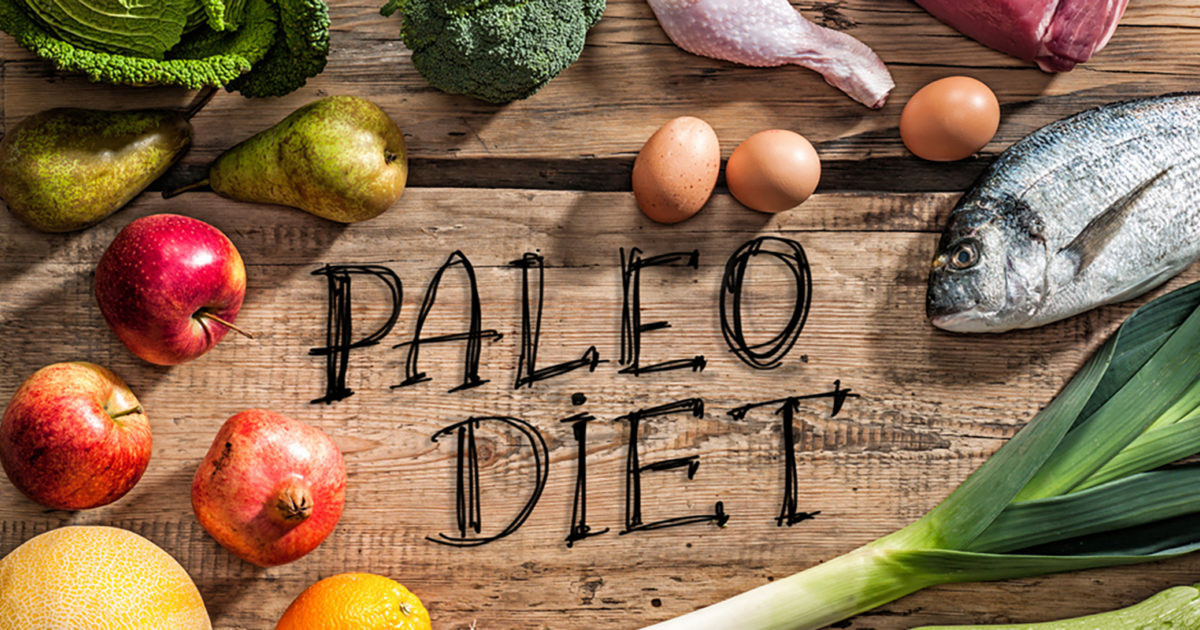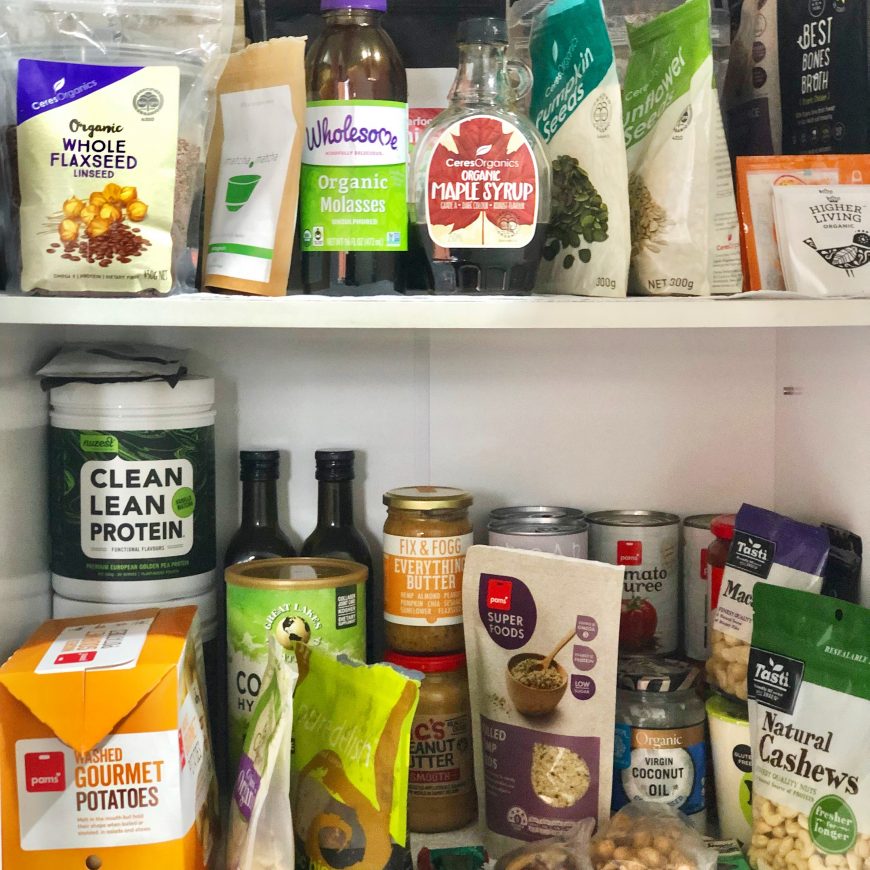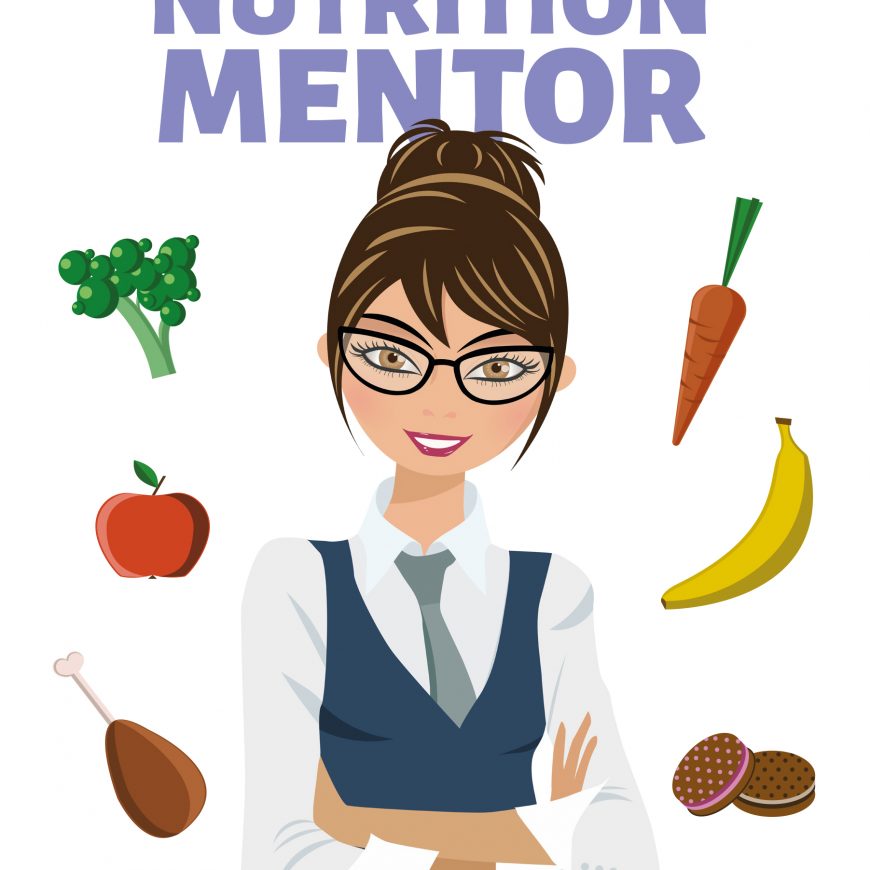This blog is part of the All About Fad Diets blog series. They’re not really fads, but more like lifestyles.
Paleo is not just a fad. It is the diet that humans are believed to have eaten during the Paleolithic or Old Stone Age era. Based on only eating foods that were available during that time e.g. fruit, vegetables, meat, seafood, nuts, seeds, and eggs. It omits grains, gluten, legumes, dairy, sugar, vegetable oils, and processed foods, therefore, cakes, muffins, biscuits, pastries, ice-cream, chips etc.
The renaissance of the Paleo diet began in the 1970’s. In 1975, gastroenterologist Walter Voegtlin published his book ‘The Stone Age Diet’. Popularity further skyrocketed upon the publication of the first book that took off ‘The Paleo Diet’ by Loren Cordain in 2002, one of the pioneers of Paleo. At the time when Paleo became popular, it felt like everyone in the world joined the time capsule and travelled back to the time when processed foods did not exist.
The Paleo era spans a lengthy amount of time from 2.5 million years ago, until the emergence of agriculture 10,000 years ago. This period is marked by anatomical and physiologic changes taking place in the human body as people adapted to climate change, learned how to control fire, and began using stone tools.
Paleo people were well structured, physically strong, and built like athletes. Their life expectancy might have only been 25-35 years, but that was due to danger (saber-tooth tigers), communicable diseases (e.g. flu, tuberculosis, measles, and covid-19-like conditions!), and of course the risk to mother and baby in childbirth. Nowadays, non-communicable diseases (e.g. heart disease, atherosclerosis, diabetes, and cancer) are the greatest killers, which are largely preventable.
Our Paleo ancestors most likely lived longer and died shorter. In 21st century, we live shorter and die longer. This is the difference between surviving and thriving.
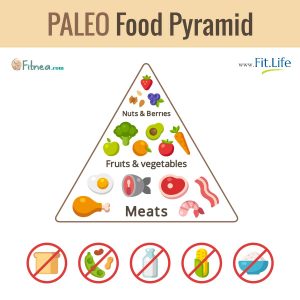
Pros
Weight Loss/Management
Weight loss is inevitable if you’re coming from a SAD (standard American diet)!
Increased Brain Size
The first benefit of eating meat is believed to be an increased brain size, neural expansion, and reduced gastrointestinal size, according to anthropologists. The switch from a largely herbivore diet, to an omnivore diet, differentiated humans from animals. This enabled our species to become the intellectual beings we are today.
Back to Basics
Paleo takes us back to our humble beginnings of the standard meat-and-three-vege dinner. So simple. Yet so healthy. This encourages people to get back to basics. Paleo excludes many ‘bad’ foods, therefore, you have no choice but to eat healthily!
Reduce Modern-Day Diseases
Paleo helps to reduce modern-day diseases e.g. obesity, diabetes, cardiovascular disease and metabolic syndrome. It naturally makes you eat more protein, less carbs, less sugar, less salt, no processed foods, and a truckload more vitamins and minerals. Foods included on a Paleo diet are more nutrient-dense, meaning they have more vitamins and minerals gram-for-gram than a typical western diet.
Improves Blood Sugar and Cardiovascular Risk Factors
Research shows that Paleo is more effective at improving blood sugar and cardiovascular risk factors, compared to a ‘diabetes diet’ (recommended by doctors) in patients with type 2 diabetes. Paleo is also superior to a ‘guideline-based control diet’ in people with metabolic syndrome.
Nose-To-Tail-Eating
Is advocated in Paleo. Nowadays people only seem to eat muscle meats. We don’t pick an entire beast out of the fridge at the supermarket. A generation or two ago and even still now in some countries, eating every part of the animal is part and parcel of daily life. In the past when food was scarce or expensive, the whole animal was consumed in order to have enough food to survive. It was a waste not to be sustainable.
This nose-to-tail eating is regaining popularity among chefs. On the menus there is more liver, kidney, bone marrow and bone broth. If you are going to kill and animal and eat it, then you should have the decency to eat it all. Not only is this more respectful for the animal, it is more ethical and economical. Most importantly, organ meat is more nutritionally superior to muscle meat.
Offal
Is also advocated in Paleo. The liver of animals (and humans) stores vitamins A, D, E, K, B12, folate, and minerals like iron and copper. Therefore, we are getting a dose of these nutrients when we eat it. Liver is particularly rich in vitamin A which is beneficial for eye health, supporting immunity, and skin health (especially acne). Organic liver (and other meats) is preferable due to the potential toxins. This is because animals (and humans) can have toxins in their liver. The liver being the detoxing organ of the body.
Check out my Liver Detox Tonic.
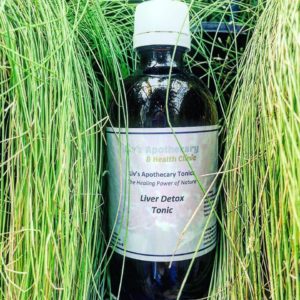
Bone Broth
Is included in Paleo. Bone broth and gelatin/collagen have immense gut healing properties. It is highly recommended for anyone with leaky gut, joint pain, poor quality skin, hair and nails. Collagen has become a popular supplement for hair and nail growth, and skin renewal. It makes sense that bone broth, gelatin and collagen improve our joint health as they supply us with the raw materials from animals to recreate our own in the body. Bones and bone broth should also be organic (if possible) as bones are a storage house for toxins.
Both the Paleo diet and a gut-healing diet include bone broth, offal, plus high fat and low carb/sugar foods. They both exclude grains, gluten, legumes, dairy, sugar, vegetable oils, and processed foods.
Paleo Pantry Foods
Are now available e.g. granola, bliss balls, snack bars, and beef jerky. Bringing convenience foods to cavemen!
Anti-Inflammatory Diet
Paleo is an anti-inflammatory diet because it avoids vegetable oils (e.g. soybean oil, canola oil, sunflower oil, corn oil, cottonseed oil, safflower oil, peanut oil, sesame oil, and rice bran oil), margarine, dairy, white flour, refined sugar, processed foods, and the hard-core followers might also exclude peanut butter (due to aflatoxins).
Junk Food Isn’t Paleo
If you’re at a party you’re not going to be able to eat the party food. A Paleo diet reduces the amount of junk food the average person eats (because you won’t be able to eat the cakes at shared morning tea).
Encourages Awareness
If you eat Paleo you have to check everything that comes in a packet (if your food comes in a packet).
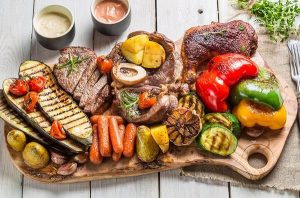
Cons
What About Calcium?
Check out All About Dairy-Free for non-dairy calcium sources.
Don’t Eat Steak for Breakfast, Lunch and Dinner
The Cancer Society state eating large quantities of red (and processed) meats can increase the risk of some cancers, particularly bowel cancer. Despite iron being an essential nutrient, when broken down haem iron (animal-based iron) damages nearby cells, enabling cancer to develop more easily. Additionally, cooking meat at very high temperatures and burning/charring meats creates heterocyclic-amines which can cause stomach cancer.
The Cancer Society recommends a moderate consumption of less than 500g of red meat per week – a 65-100g serving no more than 3-4 times a week.
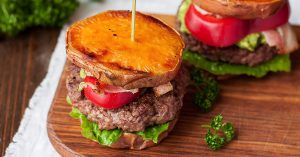
Liv’s Recommendations
Bear in mind (literally, the thought of bears chasing you would’ve constantly been on your mind!) that there wasn’t one single Paleo diet across the world.
For example, the Paleo diet in the tropics was tropical fruits, roots, grains, coconut water, and seafood. On-the-other-hand (which the bear has probably eaten by now!), the Paleo diet that Inuit eat was/is seal, fish, birds, eggs, and polar bears.
One Paleo diet is high carb, low fat. One Paleo diet is low carb, high fat. The modern Paleo diet may be a low carb diet, but the original Paleo diet (or the one your ancestors ate) might not have been. Find out your ancestry and eat their Paleo diet. Rather than the blanket modern Paleo diet recommended to everyone.
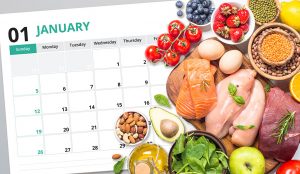
To Wrap It Up
With a keto, Paleo, primal, Mediterranean, vegan, vegetarian, gluten-free, dairy-free wrap of course (or not if you’re intermittent fasting!).
The purpose of this series of blogs isn’t to choose a diet to follow. It’s to inform you of the pros, cons and my recommendations, if you do choose to (or already) follow one of these diet trends.
I personally pick and choose what I like, and more importantly what suits my body, from each diet to create my own personalised diet. My motto is “Realigning Nutrition with Intuition”. Try N=1 Self Experimentation.
Intuition is now totally disassociated from Nutrition. We don’t eat what or when we feel like eating. We eat what and when we are told we should be eating. Realigning Nutrition with Intuition means being in-tune with your body and rediscovering what diet/lifestyle is most suited to you. As I trained as a Naturopath and Holistic Nutritionist, I am not about strict plans. That is for you to decide for yourself.
There is no one-size-fits-all baseball cap when it comes to diets.
Your Nutrition Mentor,


